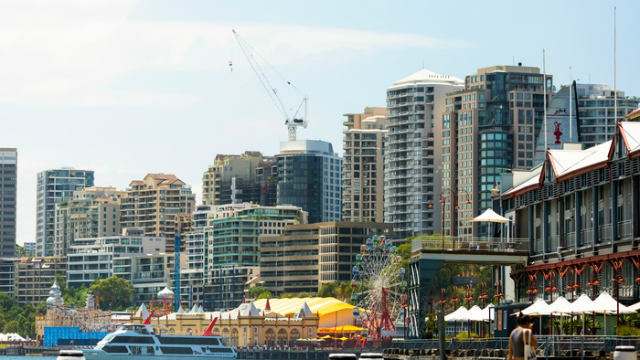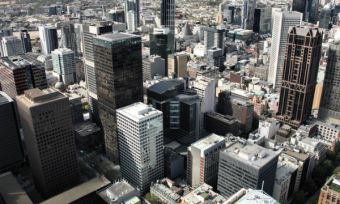New South Wales has been named as Australia’s best performing economy by the latest report from CommSec.

The quarterly State of the States report compares Australia’s states and territories on a number of factors including economic growth, retail spending, business investment, unemployment, construction work, housing finance, and dwelling commitments.
While New South Wales maintained a strong lead over the last quarter, Victoria overtook the Australian Capital Territory and landed in second place.
Queensland and Tasmania tied in fourth spot, followed by South Australia, and the Northern Territory.
Western Australia is considered to be Australia’s worst performing economy, lagging in annual growth rates and coming in below the national average across all categories.
Craig James, CommSec Chief Economist, said that while the Australian economy is doing well as a whole, it is clear that much of the momentum is being provided from Australia’s south-east, especially NSW, Victoria, and the ACT.
“While firm population growth and home building have been providing key economic momentum, infrastructure spending will be a key growth driver in the year ahead,” he said.
https://www.youtube.com/watch?v=ZSCvRLD2WKE
Source: CommSecTV
State Economic Rankings
1. New South Wales
Strength: Dwelling Starts
Weakness: Construction Work
NSW held top rankings for both ‘retail trade’ and ‘dwelling commencements’.
The number of dwelling commencements over the quarter (17,406) was up 62.1% compared to the decade average.
NSW ranked in second place for 5 of the 8 indicators, including economic growth, which was $484.596 million over the quarter, up 25.3% compared with the decade average.
For ‘construction work’, NSW ranked third – the state’s lowest ranking across all of the categories.
“New South Wales remains solidly on top of the economic performance rankings,” said James.
“For the past 2 quarters we said that it may experience a challenge from either Victoria or the ACT over the coming year. And that remains the case.”
2. Victoria
Strength: Population Growth
Weakness: Unemployment
With the fastest population growth over the quarter (up 2.4%), Victoria overtook the ACT to come in at second place.
The state ranked second on 2 indicators and in third spot on 2 indicators.
“Retail spending in Victoria was 14% above decade-average levels, once again supported by home building and the strength in employment,” said James.
“Victoria continues to record the strongest annual population growth across the country.”
3. Australian Capital Territory
Strength: Housing Finance
Weakness: Construction Work
The ACT dropped from second spot to third on the rankings.
It ranks highest for ‘housing finance’, up 22.4% compared to the decade average, and experienced $66.631 million in economic growth over the quarter.
“While economic momentum is on its side, especially with population growth and construction, the Territory has experienced a softer job market in recent months,” said James.
4. Tasmania (tied with Queensland)
Strength: Population Growth
Weakness: Economic Growth
Coming in at fourth place over the past quarter, Tasmania is now joined by Queensland.
Despite bringing in only $32.597 million in economic growth, its annual employment growth (3.8%) is the fastest in the nation, and population growth is up 3.6% compared with the decade average.
“Tasmania is benefitting from rising population growth – the fastest in 6 years – a solid market for established dwellings and the strongest job growth in 2 and a half years,” said James.
4. Queensland (tied with Tasmania)
Strength: Retail Trade
Weakness: Construction Work
Queensland experienced strong export growth at an annual rate of 56%, helping its economy grow $353.858 million over the quarter.
“Queensland benefits from firmer tourism, exports, and housing activity,” said James.
“Investment and population growth have the potential to drive further broader improvement.”
6. South Australia
Strength: Business Investment
Weakness: Unemployment
Despite holding the top ranking for ‘business investment’, South Australia has the highest unemployment rate at 7%.
The state ranked fifth for ‘dwelling commencements’ and ‘housing finance’, and its economy grew $110.380 million over the quarter.
“The South Australian economy is showing promising signs with investment lifting over the past quarter,” says James.
7. Northern Territory
Strength: Unemployment
Weakness: Population Growth
Ranking first for a number of indicators including ‘construction work’, ‘unemployment’ (only 3.1%), and ‘economic growth’, the Northern Territory lags on population growth, housing finance, and home starts.
This caused it to slip from sixth to seventh place on the economic performance ratings.
Northern Territory’s quarterly economic growth figure of $32.833 million was 29.4% higher than its decade average, making it the nation’s top performer for ‘economic growth’.
“The Northern Territory has the strongest job market in the nation,” said James.
“Not only is the jobless rate in the Territory the lowest in the nation, but it is almost 22% below its decade average.
“The outlook for the Northern Territory is constrained by weak population growth.”
8. Western Australia
Strength: Retail Trade
Weakness: Unemployment
Western Australia’s lacklustre economic performance is a result of the demise of the mining construction boom.
On a brighter note, the unemployment rate fell over the quarter to 5.6%.
“Western Australia is benefitting from generally good mining and metal prices and solid export volumes,” said James.
“Unemployment has also eased over the past three months, while tourism and agriculture offer attraction.”
You can access the full State of the States Report on the CommSec website.





Share this article